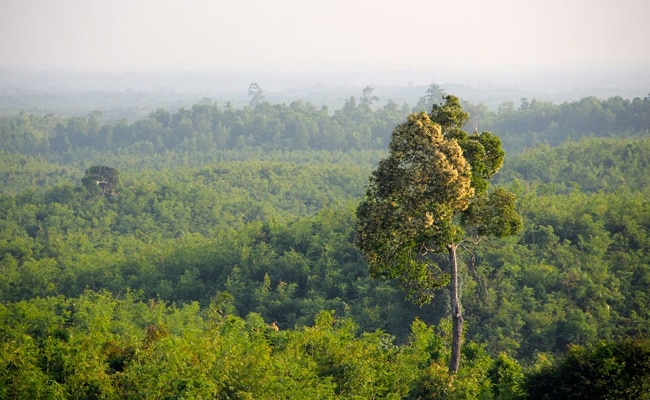
The world’s frozen regions have the highest albedo
Planting trees in the wrong places can actually contribute to global warming, scientists said Tuesday, but a new map identifies the best places to replant forests and cool the planet.
Trees absorb carbon dioxide, and restoring degraded forestland or planting saplings to increase forest cover is a tool to combat climate change.
But in some cases, more trees mean less sunlight is reflected back from the Earth’s surface, and the planet absorbs more heat, according to a study in the journal Nature Communications.
“In some places, afforestation can lead to net negative climate outcomes,” Susan Cook-Barton, one of the study’s co-authors, told AFP.
She said scientists already knew that restoring tree cover caused changes in albedo (the amount of solar radiation reflected back from the Earth’s surface) but didn’t have the tools to explain the change.
Using the new map, researchers were able for the first time to account for the cooling effects of trees as well as the warming caused by reduced albedo.
They found that projects that did not take albedo into account overestimated the climate benefits of additional trees by 20% to 80%.
But Cook-Barton, senior forest restoration scientist at The Nature Conservancy, said the maps also provide tools to help policymakers determine where to best allocate scarce resources to maximize climate impact.
“There are still a lot of places where restoring tree cover is still a good idea to combat climate change. We just want to help people find those places,” she said.
return on investment
Albedo is the highest in the world’s frozen regions, with high-albedo mirror-clean snow and ice reflecting up to 90% of solar energy.
It is one of the Earth’s primary coolants, working with land and oceans to absorb excess heat and greenhouse gas emissions that contribute to planet warming.
Many countries have pledged to plant billions of trees as a bulwark against global warming, but not all efforts benefit the planet equally, the study shows.
Humid tropical environments such as the Amazon and Congo Basin have high carbon storage and low albedo variability, making them ideal locations for restoring forest cover.
The opposite is true for temperate grasslands and savannas, Cook-Barton said.
She said even projects in the best locations could provide 20% less cooling than estimated when changes in albedo are taken into account.
But she stressed that restoring forests brings undeniable benefits to people and the planet, such as supporting ecosystems and providing clean air and water.
“We really don’t want our work to be an overt criticism of the movement,” she said.
“(But) we can’t plant trees everywhere. We don’t have enough money, time, resources, people or saplings.
“So it’s really about making the most of limited investments and getting the maximum climate return per hectare invested,” she added.
(Except for the headline, this story has not been edited by NDTV staff and is published from a syndicated feed.)
Follow us on Google news ,Twitter , and Join Whatsapp Group of thelocalreport.in













